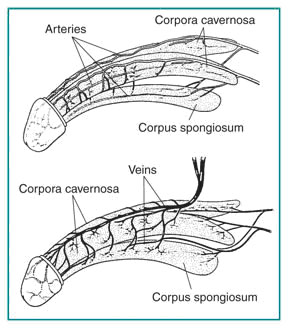Are you unable to get a firm erection when aroused? You may have erectile dysfunction. The Department of Urology at Singapore General Hospital shares some of its causes.
What is erectile dysfunction?
Erectile dysfunction (ED) is the inability to get or keep a firm erection that is sufficient for sexual intercourse.
In an erection, impulses from the brain and local nerves cause the muscles of the corpora cavernosa, two chambers in the penis, to relax and allow blood to flow in through the arteries and fill the spaces. The engorged chambers expand the penis, and the tunica albuginea, a membrane covering the two chambers, helps to sustain the erection. The erection ends when muscles in the penis contract to stop the inflow of blood and open the veins for blood outflow.

Figure 1: Anatomy of the penis
Causes of erectile dysfunction
This may be classified into several categories:
- Psychological factors such as stress, anxiety, guilt, depression, low self-esteem, and fear of sexual failure.
- Chronic illnesses such as diabetes, high blood pressure, nerve disease or damage, multiple sclerosis, atherosclerosis, and heart disease can damage the nerves and arteries to the penis, resulting in ED.
- Poor lifestyle, such as smoking, excessive alcohol intake, being overweight, and lack of exercise.
- Pelvic surgery, which can injure nerves and arteries near the penis.
- Medications such as blood pressure drugs, antihistamines, antidepressants, tranquilisers, appetite suppressants, and cimetidine, an ulcer drug.
- Hormonal abnormalities, such as low levels of testosterone.
Read on to find out how erectile dysfunction is diagnosed and its treatment options.
